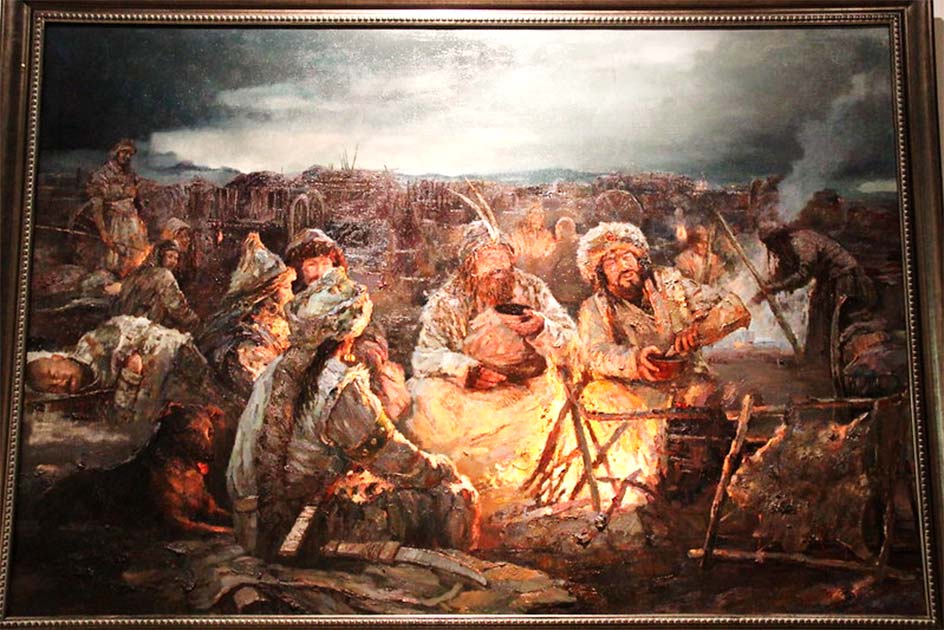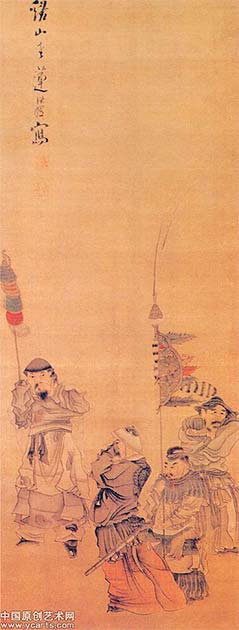In the awe-inspiring Altai-Sayan Mountain range in southern Siberia, the city of Abakan holds a lengthy and intriguing history spanning millennia. But in the 1940s, archaeologists discovered something truly unexpected near Abakan – a 2,000-year-old palace, resembling those of China’s Han Dynasty. The surprising aspect of this discovery was the location of the palace, not just hundreds of miles away from the Han Empire’s region, but in the territory of their arch-rival, the Xiongnu.
The Xiongnu were nomadic pastoralists who established a powerful tribal alliance that ruled much of Central Asia from the 3rd century BC to the 2nd century AD. Their persistent incursions into China’s northern frontiers prompted the northern Chinese kingdoms to build defensive walls, eventually forming the Great Wall of China.

The palace’s discovery occurred in 1941 when Russian construction workers, establishing a route from Abakan, the capital city of the Khakassia Republic in Russia, to the village of Askyz, unearthed the foundations of a destroyed building. The excavation by archaeologists in the subsequent four years revealed a notable finding – the remains of an expansive palace reminiscent of the Han Empire (206 BC – 220 AD).
The palace was oriented precisely from east to west. Its dimensions were 45 meters from north to south and 35 meters wide (150 by 115 feet). A large square room (12 meters / 40 feet square) was located in the center of the palace, which had twenty rooms and a hall. The floors and walls of the palace were constructed of mud. In the central part, the walls were up to 2.2 meters (7 feet) thick, while the walls of the side rooms were slightly thinner. A distinguishing characteristic of the building was a heating system placed underneath the floor of the rooms. This comprehensive network of interconnected channels, made from stone slabs, facilitated the distribution of heat throughout the palace from the furnace.
- Siberian Mystery Ruin: What Was Por-Bazhyn and Why Was it Built?
- The Sanxingdui of China: A Ninth Wonder of the Ancient World?
Several Chinese-style roof tiles were found by the archaeologists, with many bearing inscriptions typical of the Han Dynasty era. The same text was inscribed on all these tiles: “Son of Heaven (i.e., the Chinese emperor), 10,000 years of peace, and one of which (i.e., the empress), we wish 1,000 autumns of joy without sorrow.”
“A Place of Wealth and Power”
The central hall’s doors were adorned with massive bronze cast mascarons, decorative facial sculptures, with handles shaped like horned rams. The ringed-handle was passed through the ram’s nose.
In addition to these, the archaeologists excavated various artifacts from the palace, including fragments of a jade vase, gold earrings, bronze ware, pottery, knives, belt buckles, plow lines, stone carvings of elephants and animal heads, and a variety of tools used for its construction. It remains uncertain where these artifacts are now kept, with hopes they have been conserved and safeguarded.
The uncovering of the palace sparked an animated discussion about how the palace and its elite inhabitants ended up not just far from the Han homeland, but in enemy territory.
Russian academics like S V Kiselev and L R Kyzlasov have suggested that the palace was owned by the ancient Chinese General Li Ling, who was defeated by the Xiongnu and might have defected to them. Li Ling commanded a force of 30,000 Han soldiers against Xiongnu raiders in 99 BC, which resulted in the complete annihilation of his army. Only 400 of Li Ling’s troops survived to return to Han territory.
- Blood and Mortar: The Killer Architecture of Hitobashira
- Africa’s Strange Ruin: What Exactly Is Great Zimbabwe?
Initially, it was thought that Li Ling had perished on the battlefield, a fate deemed most ‘honorable’ for a defeated general. However, it was later revealed that Li Ling had surrendered to the Xiongnu, and rumors began to circulate that he had betrayed his own people, although concrete evidence to confirm this suspicion is scant. Upon hearing the news, the Han Dynasty’s ruler, Emperor Wu, commanded severe punishment for Li Ling’s family. The theory suggests that upon hearing of his family’s mistreatment, the imprisoned Li Ling defected and, in an act of vengeance against the Emperor, began training Xiongnu warriors in Han warfare tactics. Presumably, Li Ling was eventually accepted by the Xiongnu, which allowed him to build his palace on their land.

While this theory remains widely accepted, there are other suggestions as well. More recently, for instance, A. A. Kovalyov has claimed that the palace was the residence of Lu Fang, a claimant to the Han throne from the Guangwu era in the 1st century AD. According to historical accounts, Lu Fang declared himself a descendant of a Han Emperor and fought to become the legitimate Emperor of China. However, he later instigated a rebellion and defected to the Xiongnu. The official records of the Later Han Dynasty, compiled by Fan Ye in the 5th century AD, state that he lived in Xiongnu territory with his family for a decade until his death. This theory is corroborated by Chinese scholar Chen Zhi, who argues that a character used in the tile inscriptions can be dated to the period 9 – 23 AD, much too late to have been Li Ling.
Despite the plausibility of both theories, scholars are still unable to definitively identify to whom the Chinese palace belonged, and why it was situated in the Xiongnu’s land.
Top image: Legendary Chinese palace in Siberia. Source: QuietWord / Adobe Stock.